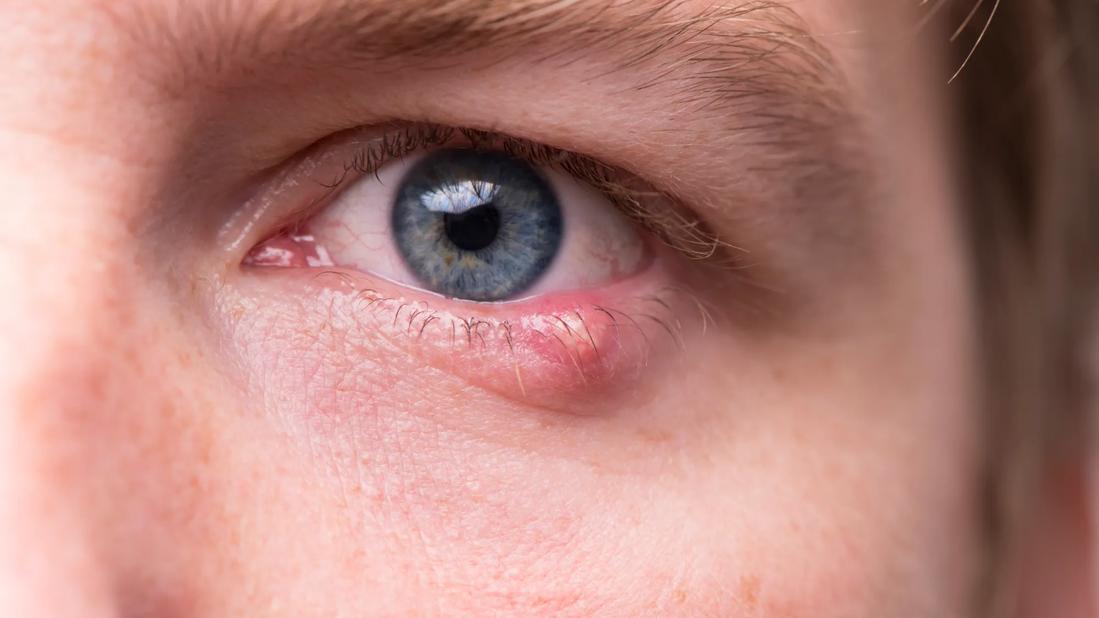How To Get Rid of a Stye
Keep your eyes clean and try to stay makeup- and contacts-free to help move healing along

Do you sometimes get tender, red swollen bumps at the edge of your eyelids? They’re probably styes.
A stye is a bacterial infection in an eyelash follicle or tear gland. If you scratch or get bacteria in the area, the follicle or gland sometimes gets blocked and infected.
“Styes typically occur on the outside edge or just under the eyelid,” says family physician Matthew Goldman, MD. “They’re bumps that look like pimples, surrounded by redness. They usually last about three days, pop and then heal in about a week.”
And although they can be painful (and almost always uncomfortable), you can take steps to avoid them.
Dr. Goldman explains how to get rid of a stye at home, and when you need to see a doctor.
Can a stye be cured overnight?
If you want to know how to get rid of a stye overnight, it may be best to manage your expectations.
“While an overnight cure is unlikely, you may feel significant relief after starting prompt home care,” says Dr. Goldman. “Most styes can take seven to 10 days to heal with at-home treatments.”
How to get rid of a stye fast
Wondering how to treat a stye? There are a few things you can do at home to help.
“Before touching your eyes or applying any remedies, wash your hands thoroughly with soap and water,” instructs Dr. Goldman.
And then, try one of these home remedies:
1. Apply a warm compress
You can help the process along by placing a warm, clean, damp cloth on the affected eye for at least 10 to 15 minutes a few times a day.
Folding up a damp washcloth and microwaving it for 10 to 20 seconds can work well. It’s convenient as a warm compress because as any edge of the washcloth gets too cool, you can refold for a warmer side. Just be careful the cloth doesn’t get too hot to use on your eyes.
“The heat allows the stye to drain on its own,” Dr. Goldman explains. “Just continue to reheat the washcloth because it will lose heat over time.”
2. Try an over-the-counter medication
Over-the-counter ointments, medicated pads and solutions (such as bacitracin eye ointment) may help ease pain, but they don’t necessarily increase recovery time, says Dr. Goldman.
You can also take nonsteroidal anti-inflammatory drugs (NSAIDs) like ibuprofen, which may help reduce inflammation, burning and swelling.
3. Use baby shampoo
Looking for a tried-and-true, inexpensive option? Dr. Goldman recommends using baby shampoo or another gentle soap that’s free of harsh chemicals, fragrances or dyes.
“Simply wash the eye gently with baby shampoo or a mild natural soap that doesn’t burn your eye,” he advises. “Dilute the shampoo or soap in warm water and apply to your eyelids gently with a clean cotton swab or washcloth.”
4. Forgo makeup
To avoid further irritation and infection, Dr. Goldman advises not wearing makeup when you have a stye.
“You want to keep the area clean and uncovered — cosmetics can prevent this,” he says. “Wearing makeup when you have a stye may delay the healing process.”
You also want to clean any makeup brushes and throw away any eye makeup such as eyeshadow, mascara or eyeliner that you may have used when you had a stye.
Don’t wear contact lenses
If you normally wear contact lenses, Dr. Goldman recommends taking a break from them when you have a stye, as they can also cause irritation and infection.
And once your stye is healed, it’s best to start with a fresh pair of contacts to avoid further irritation or infection.
Home remedies to avoid
The internet can be full of home remedies — and while some may work, Dr. Goldman says to avoid the following:
- Massaging the area. You may think that massaging the area can help with drainage. But Dr. Goldman says it’s not something he recommends. “Sometimes, massage in the area can make the condition worse or lead to complications by increasing the risk of spreading the infection or causing damage to the surrounding tissues,” he explains.
- Using coconut oil.“Coconut oil is not a standard recommended approach for stye management,” he warns. “There is limited scientific evidence to support the use of coconut oil for treating styes. Although coconut oil has antimicrobial and anti-inflammatory properties that may have potential benefits, additional studies are needed to determine its true efficacy.”
- Popping a stye.If you’re wondering how to get rid of a stye fast, you may be tempted to pop it. But don’t do it. “When a stye comes to a head or when it pops, it will slowly drain and heal, but you should always let it do that on its own time,” Dr. Goldman stresses.
Bottom line?
If you’re uncertain that what you have is a stye (for instance, it could potentially be a chalazion, a firmer lump in an oil gland in the eyelid that’s less painful than a stye, or fatty deposits known as xanthelasma) or it doesn’t improve within one to two weeks with home remedies, you might need more treatment.
Dr. Goldman recommends checking with a healthcare provider if:
- The stye hasn’t started to improve in one to two weeks.
- It gets worse quickly.
- It becomes extremely painful.
- It grows in size.
- It bleeds.
- It affects your vision.
- It spreads to the white of your eye (a sign of infection).
- You develop a fever.
- You see redness in your cheeks or other parts of your face (indicating that the infection is likely spreading).
“Styes are generally easily managed and are usually an annoyance rather than a major problem,” Dr. Goldman says. “But if they don’t go away or you have other unusual symptoms, talk to your doctor.”